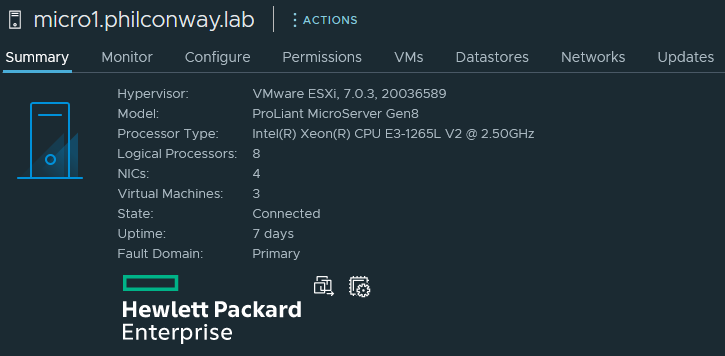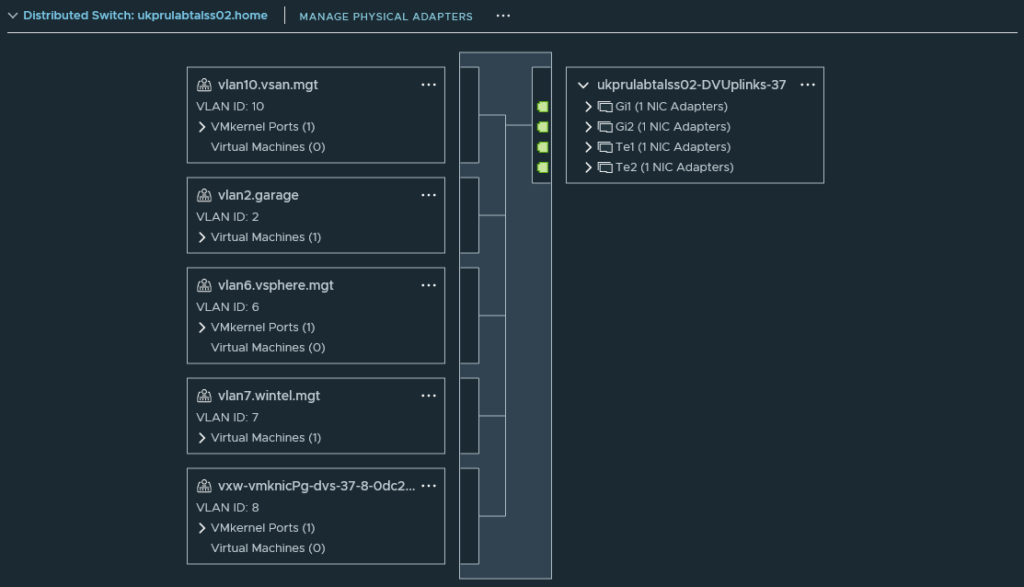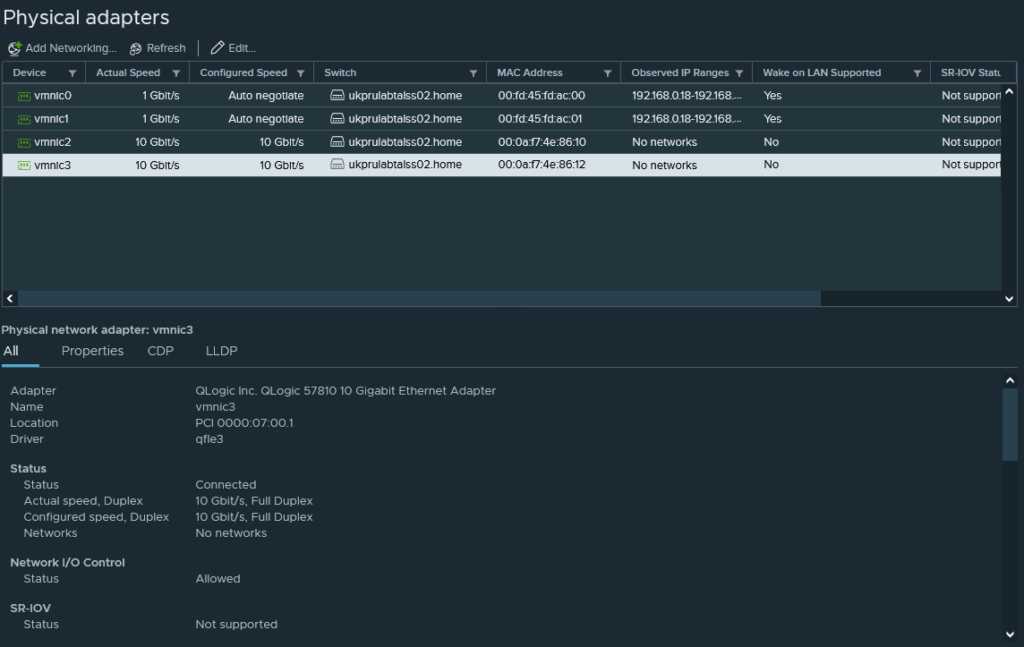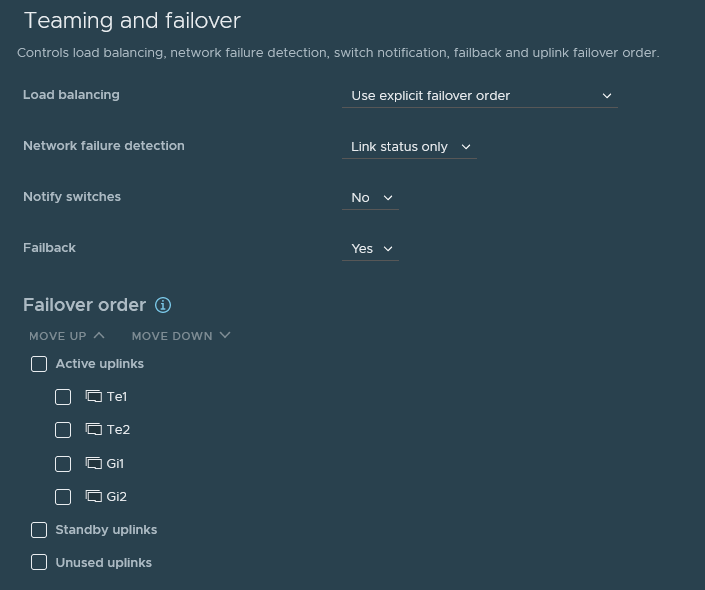vSphere Configuration
All three hosts intended to be part of the vSAN cluster are running the same version of vSphere/ESXi (7.0.3f).

EVC is enabled and configured for Ivy Bridge (matching the CPU generation). DRS is set to Partially Automated.

All hosts are part of the same common vSphere Distributed Switch (version 7.0.3). VLAN 6 is reserved for vSphere host management, VLAN 10 is used for vMotion, vSAN and storage-related traffic. The vDS and all associated port groups have an MTU of 9000. The same value is configured on both lab switches that form the physical network fabric.

The vDS is backed up by 4 NICs on each host – vmnic0/1 using the Microserver’s onboard 1Gb Nics, and vmnic2/3 using the QLogic 10Gb adapter. These are mapped to Gi1/2 and Te1/2 respectively within the vDS (to make it easier to tell the different speeds of NICs apart at a glance).

These are configured in explicit failover order so the 10GB NICs are preferred when the lab’s 10Gb switch is powered on.

CDP is enabled on all hosts and both switches to assist with troubleshooting (in production you’d probably want this turned off).


Each host has 3 vmknics, 1 for management, 1 for vMotion/vSAN (if this wasn’t a lab environment you’d want these split into seperate vmknics) and 1 for VXLAN (NSX). The vMotion and VXLAN vmknics have an MTU of 9000, are configured for DHCP (the lab management switch acts as a DHCP server).

The cluster is licenced for vSAN (there is an additional license required which can be entered via Cluster>Configure>vSAN Cluster>Assign License).

A common NTP source is configured on all hosts in the cluster (using the lab AD Domain Controller, which gets its NTP in turn from the Cisco Router providing external internet access).